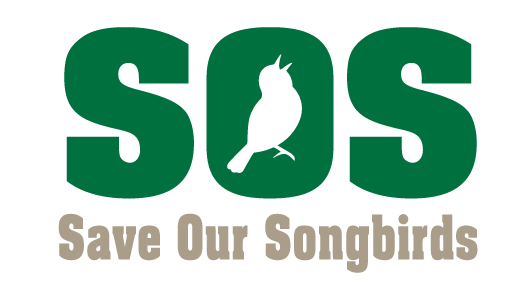Bird groups urge Wisconsin homeowners to act now to prevent bird-window collisions this fall
Birds killed after colliding with windows in Madison buildings and collected by the Madison Bird Collision Corps volunteers as part of their efforts to document and help address bird-window collisions. Photo: Madison Audubon
MADISON - Millions of songbirds hatched in Wisconsin over the summer will fly south for the first time starting in September, and bird conservation groups are asking Wisconsin residents to act now to prevent the migrating birds from colliding with home windows during fall migration.
The Wisconsin Bird Conservation Partnership is offering two free webinars on Aug. 23, 2023, to demonstrate three easy ways residents can prevent birds from colliding with home windows when they start migrating from and through Wisconsin starting in September. The webinars are at noon and at 7 p.m.; register now at https:// sossaveoursongbirds.org/webinar.
The webinar is part of the “Stop The Fallout” campaign featuring other events with and by partners, displays and special discount offers on popular and proven effective solutions for window collisions.
Fall migration the deadliest time for bird-window collisions
North American bird populations have declined significantly over the past 50 years and birds colliding with windows is a major threat. Research has shown that nearly 1 billion birds die every year in the U.S. after colliding with windows, nearly half of them home windows.
Such collisions can happen year-round, but research shows they are worse during spring and fall migration. The toll is greatest during fall migration because not only are adults flying south, but young, more inexperienced birds hatched earlier in the summer are making their first journey.
“Birds colliding with windows is a big problem everywhere, and some people don’t realize their windows may be killing birds,” says Karen Etter Hale, who chairs the Wisconsin Bird Conservation Partnership, a collaboration of 180 organizations in Wisconsin committed to sustaining the state’s native birds.
“This webinar is a great chance to find out what you can do to easily address one window that is the biggest problem for birds, and to take action before songbirds begin migrating this fall,” she says.
More details about the webinars
The webinars will be presented by Brenna Marsicek, who coordinates Madison Audubon’s Bird Collision Corps volunteers who monitor buildings during spring and fall migration to document birds killed in collisions with windows. Corps members work with building owners to address the most problematic windows.
Marsicek, also Madison Audubon’s director of communications, will talk about why birds collide with windows and which windows are likely the biggest problem. She'll demonstrate three easy ways to prevent collisions: dot decals, a curtain of paracord, and using tempera, or washable paint, to make a design on the window to break up reflections. She'll also cover why some methods don't work well, like using a single silhouette of a raptor or a few decals placed on the inside of a window.
Bird-Window Collision Fast Facts
Up to 1 billion birds die every year in the United States after colliding with windows. Skyscrapers (over 12 stories) individually can be big bird killers, but there are relatively few of these in the United States so they collectively account for less than 1% of estimated bird deaths due to collisions.
Low-rise buildings 4 to 11 stories account for more than half, 56%, of the dead birds due to window strikes. Buildings 1 to 3 stories, residences, account for 44%.
Bird-window collisions can happen year-round but during bird migration is the worst time, and fall migration is the deadliest because there are the most birds in the air — the year’s young and surviving adults.
Windows by bird feeders, bird baths and enhanced native plantings can be among the biggest problems for birds because these features draw birds in near windows.
Some of our favorite songbirds to see and hear are also those most vulnerable to colliding with buildings. The list below shows the 15 birds most vulnerable to collisions with home windows; the photo illustration shows how much more vulnerable three of our favorite species are to window collisions than the average bird.
15 bird species most vulnerable to window collisions with residences (1-3 stories)
Purple Finch
Ruby-throated Hummingbird
Ovenbird
Brown Creeper
House Finch
Black and White Warbler
Cedar Waxwing
Field Sparrow
Wood Thrush
Swainson’s Thrush
Northern Cardinal
Blue Jay
White-breasted Nuthatch
Yellow-bellied Sapsucker
Northern Waterthrush
Source of photo and fast facts information: Scott R. Loss, Tom Will, Sara S. Loss, and Peter P. Marra "Bird–building collisions in the United States: Estimates of annual mortality and species vulnerability," The Condor 116(1), 8-23, (2 January 2014). https://doi.org/10.1650/CONDOR-13-090.1


